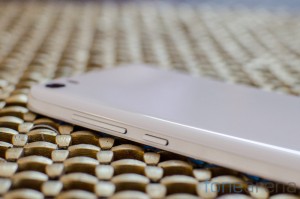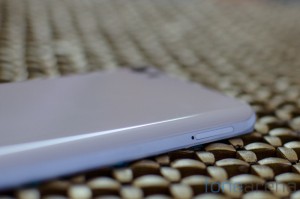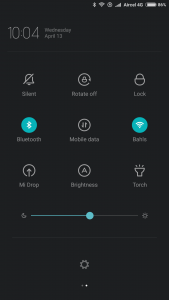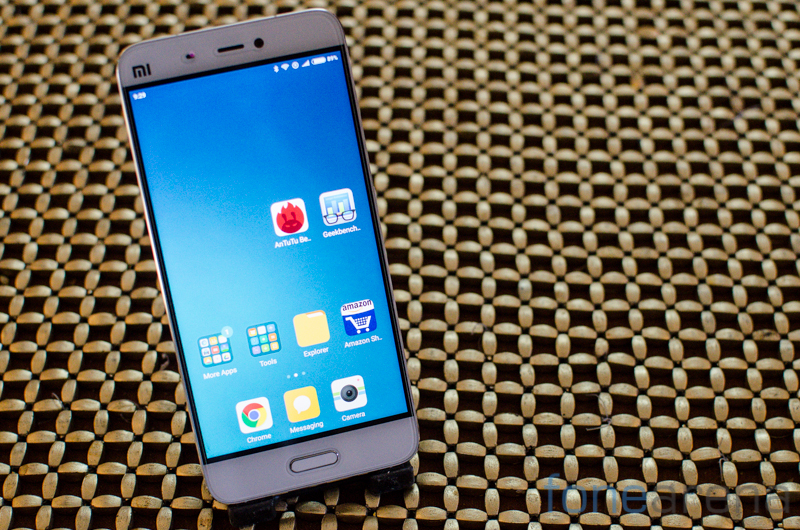
It’s been a long time coming. Rumors, speculations and just a whole lot of waiting but finally two years after the launch of the rather spectacular Mi 4, the brand new Mi 5 is here with us. All this while, the company has been working on expanding its portfolio both through the Redmi series of handsets that serve as it’s bread and butter as well as a diverse range of connected peripherals. Xiaomi certainly has been busy but that doesn’t mean that it can afford to forget the upper end of the market. Once again with the Mi 5, the company is launching a handset that is flagship grade at least on paper while undercutting the competition in terms of pricing. But does that low price also mean that Xiaomi has had to cut corners? We find that out and more in our review.
Design
Design has never been the key USP of Xiaomi handsets. Be it because of cost cutting or lack of inspiration, the handsets have been fairly derivative to look at. With the Mi 5, Xiaomi has thrown all of that out the window and has come up with what is easily one of the best looking handsets on the market.
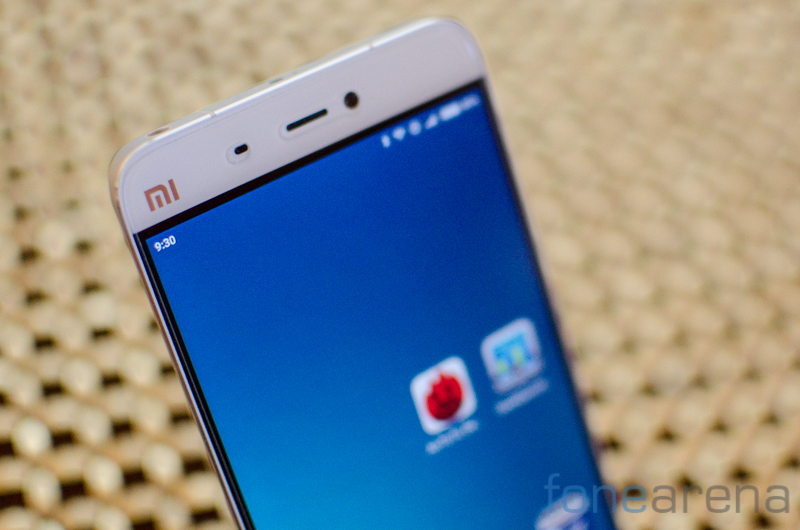
Both the front and back of the phone are encased in Gorilla Glass 4 with a metal band running between the two. The front of the phone bends the trend of curvy, 2.5D glass displays with an absolutely sharp façade. The screen is bound by symmetrical bits both at the top and the bottom. Predictably, you’ll find the front facing camera and the earpiece up at the top while the bottom sports the home button with it’s integrated fingerprint reader. Flanking it are capacitive buttons that light up as two dots.
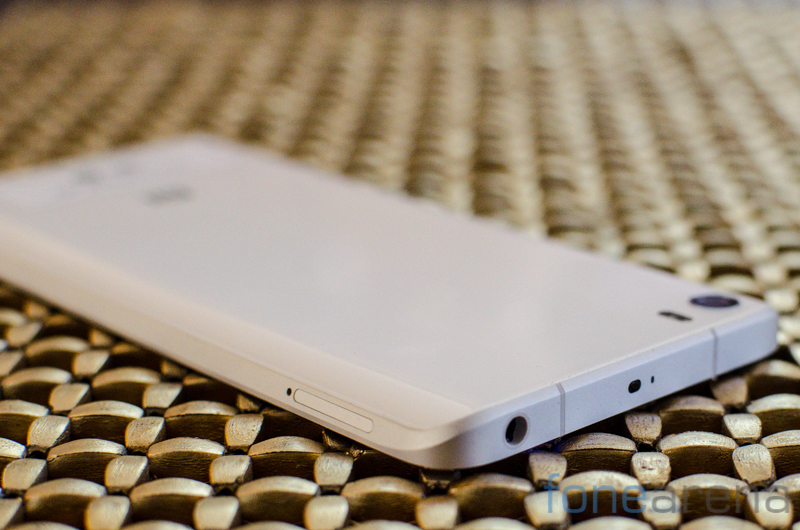
The edges of the Mi 5 slope inwards and make it exceptionally easy to press the volume rocker and the power button. The ergonomics are sound and the tactile feedback too is spot on for both the volume rocker and the power button both of which are made of the same aluminum as the surrounding frame. Over on the left side is a single slot for both the nano SIM card slots. The top of the phone is where you’ll find the headphone jack as well as the iR Blaster. Over at the bottom is the USB Type C connector used for charging as well as transferring data between the handset and the computer. The phone supports the USB 3.1 standard. Speaker grilles can be spotted on either side of the USB port alongside antenna bands that run parallel to each other both along the bottom and top of the handset. Despite having stereo speaker grilles, the handset is equipped with a single speaker which unfortunately doesn’t go all that loud.
Flip the phone over and you’ll see the beautiful chamfered metallic edges blending into the Gorilla Glass lined back. The gentle curvature of the phone makes it extremely comfortable to hold in the hand. There’s a 16MP camera module up top that is covered with a bit of sapphire crystal glass and has a dual LED flash next to it. Subtle Mi branding at the bottom is the only other thing you’ll notice. The dimensions of the Mi 5 are 144.6 x 69.2 x 7.3 mm and the light 129 grams weight contributes to making it a surprisingly petite handset.
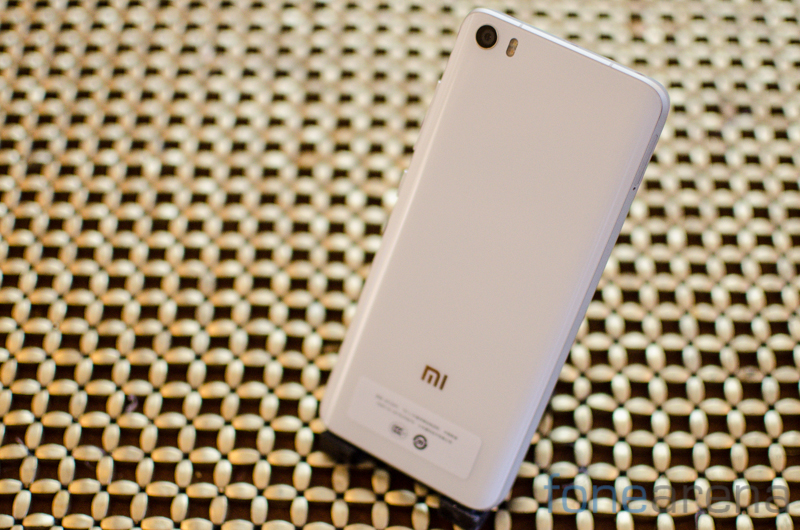
There’s something space age about the design of the Mi 5. The sharp edges, the curved back and ultra light weight make it appear like something out of a sci-fi novel. Truly the current generation flagship range of phones push the envelope of design and spearheading this are the likes of the Mi 5 and the Samsung Galaxy S7 as opposed to the iPhone which appears positively ancient.
Software
Now in its 7th version, MIUI makes a comeback on the Mi 5. On the face of it, precious little has changed but under the hood you’ll find that the phone is now running Android 6.0 Marshmallow. The interface itself is simple enough to be accessible yet dive deep and you’ll notice that there’s a considerable number of customizations on offer. While the lockscreen displays the date and time with a quick shortcut to the camera, we doubt many will see this due to the speed at which the fingerprint scanner drops you onto the homescreen. Nevertheless, a new addition to MIUI is the ability to get fresh wallpapers at regular intervals. You can also flag them as favorites, download them to use later.
The homescreen is an iOS like affair and eschews the app drawer characteristic. Instead, you’ll have access to all your apps and widgets directly on the homescreen. You can uninstall them simply by dragging them off the display area. At the bottom is a shortcut bar where you can have up to 5 shortcuts or folders. It is possible to install widgets on the homescreen if that interests you and you can also customize the transition effects between page turns.
Pulling down the notification hub reveals two panels. The first is where you’ll collect all the notifications. Swipe to the right and you’ll have access to the quick access toggles. All in all a pretty standard affair. The phone comes with Xiaomi’s homegrown backup service baked into the phone. You get 5GB of cloud storage that can be used to backup and sync contacts, messages, gallery items, call history, notes, wifi-settings, calendar entries, voice recordings and even browser bookmarks and history. Adding to that extensive list is the ability to find your phone. Most of this data will go to or through Chinese servers so those who are vary of privacy might want to avoid using the service.
Performance
The Mi 5 ships in multiple configurations with varying amounts of RAM and more importantly, processor clock speed. In India, Xiaomi has launched it’s 32GB variant which is equipped with a Snapdragon 820 processor clocked at 1.8Ghz. This is paired with an Adreno 530 GPU. This particular variant has 3GB of LPDDR4 RAM on board. The 64GB variant as well as the 128GB variant have a similar Snapdragon 820 processor but clocked at 2.15Ghz. As a bonus, the top of the line variant also gets 4GB of RAM. We’ve already put the 64GB variant through its paces. The 32GB variant predictably lacks behind it because of the lower clock speed. That said, actual performance doesn’t leave anything to complain about. The handset remains slick and smooth through and through. A tradeoff to performance gains from the latest chipset though is that the phone has a tendency to heat up. Not uncomfortably high but certainly noticeable.
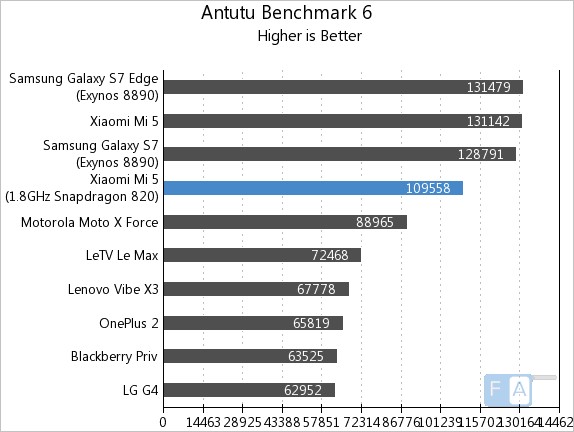
In the AnTuTu benchmark, the phone scores 109558 points due to it being the lower clocked 1.8Ghz Snapdragon 820 processor compared to the competition which uses the higher clocked variants.
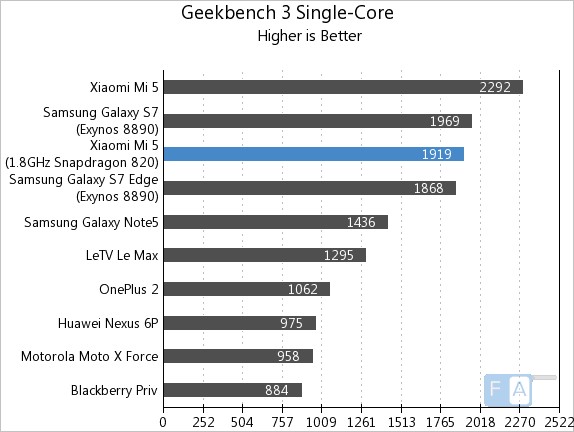
Similar to AnTuTu, the Mi 5 scores 1919 points in the Single Core Geekbench 3 benchmark which is lower compared to 2292 points on the higher end variant of the Xiaomi Mi 5.
httpv://www.youtube.com/watch?v=RrE3EEJ-EgI
Display
The Mi 5 features a 5.15 inch IPS panel. Instead of jumping onto the QHD bandwagon, the company has decided to stick to a 1080p panel and we can’t really complain about that. At the launch event, Xiaomi’s Hugo Barra waxed lyrical about the engineering difficulties behind sticking in 4 additional LEDs for a total of 16 LEDs contributing to the backlighting. As such, the display goes up to about 600 nits of brightness which is more than sufficient to keep the screen visible even in bright sunlight.
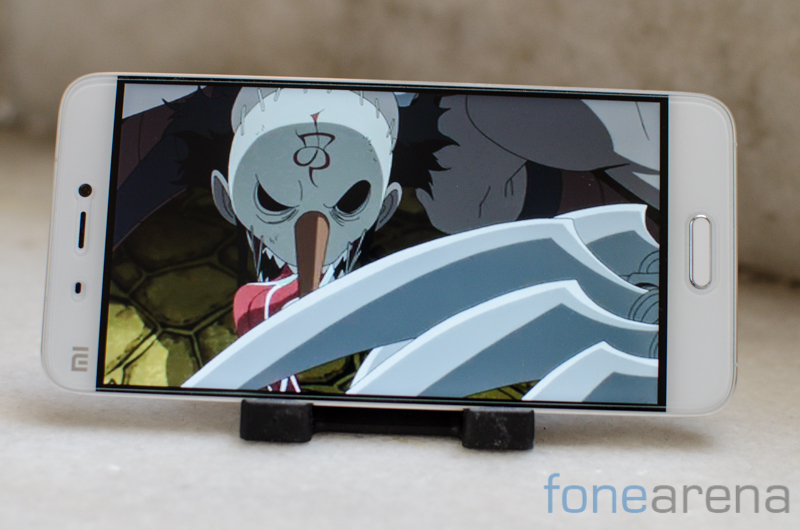
We found color rendition to be very accurate. The screen looks great and displays wonderful saturation levels. Watching multimedia content on the Mi 5 was quite an enjoyable experience and the viewing angles are good enough for a small group of people.
Camera
There’s a lot to be said about the camera on the Mi 5. The 16MP unit on the rear stands out for more reasons than one. While the competition has decided to lower the megapixel count and increase the sensor size, Xiaomi has gone ahead with the latest Sony IMX 298 sensor that integrates phase detection auto focus as well as deep trench isolation. On paper this should mean a higher resolution but worse noise levels due to the smaller photosites. Despite being a top of the line sensor actual usage can often tell a different tale.

Where the Mi 4 camera took a fair leap ahead for mid ranged smartphones, the camera on the Mi 5 treads rather cautiously. That’s not to say that the camera is bad of course. In the right hands, it is possible to extract some spectacular shots from the phone and given Xiaomi’s proclivity towards constant updates, we expect the camera to keep getting better.

The level of detail is rather good and noise levels are kept in check, more so if you use the manual mode to set the ISO. We were rather surprised to find the dynamic range to be above average and we could extract quite a lot of detail through quick post processing. Of course, the lack of RAW capture capabilities is something we lament but are willing to forgive as it’s a feature that not many use. What people do use however are filters and you’ll find 12 of those integrated into the camera app itself. The phone can also shoot panoramas and has software based Fisheye, Tilt Shift effects built into the app.
The phone comes with 4 axis optical image stabilization which means that it can compensate not for rotational but also transversal movement. Ideally, this should mean that video will be silky smooth even if your hands aren’t. Even for regular photos, it should allow you to take blur free images in lower lighting conditions. In practice, it works well enough but there are some implementation issues which make its usability a bit suspect.

First things first, OIS does not work when shooting video in 4K mode. Given that the Mi 5 produces the highest quality video when shooting in 4K mode, this is disappointing. Moving on, while the phone can shoot 120FPS slow motion video, it can only do this at 720p. If that weren’t all, 1080p video suffers from tremendous quality issues to the point that it appears as if 720p video is being upscaled to reach that resolution. You can notice this better in the screen grab above. The jump from 720p to 1080p demonstrates no improvement in the quality and infact looks a bit softer. Bumping up to 4K as on the rightmost screengrab increases the quality drastically. Of course, OIS does not work in this mode.
Connectivity & Battery Life
The Mi 5 won’t leave you disappointed from a connectivity perspective. The phone supports 4G LTE on all Indian bands and has VoLTE support built in as well. Like most others, The phone supports on LTE on both the nano SIM slots though only one at a time. There’s dual band WiFi on the a/b/g/n/ac standards. You also get support for WiFi Direct and Miracast. The phone has built in NFC for Android Pay, GPS, GLONASS and Bluetooth 4.2. Rounding it all up is the Infrared blaster. A fingerprint scanner is built into the home button. Although the fingerprint scanner isn’t always on, it is still amongst the fastest we’ve come across. A quick press of the home button immediately reads your fingerprint and drops you into the phone interface.
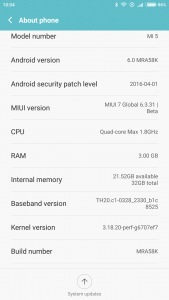
In terms of storage, the Indian unit ships with 32GB of which a little under 23GB is available at first boot. While its nice to see that Xiaomi has dropped the 16GB variant, we really would’ve appreciated a microSD card slot or at the very least a Hybrid SIM slot on the handset. More so since the company has decided against introducing the higher capacity variants in India. On that note, from a multimedia perspective the speaker on the Mi 5 isn’t particularly good. Volume levels aren’t all that high and while we don’t really expect strong bass or treble, it usually just produces muffled noise. Headphone output on the other hand is very good indeed. Using our Audiotechnica reference headphones, we found audio output to be clear through and through without any added EQ effects. Of course using a USB DAC would result in even better audio, still, the phone works great and more so with Xiaomi’s own line of headphones.
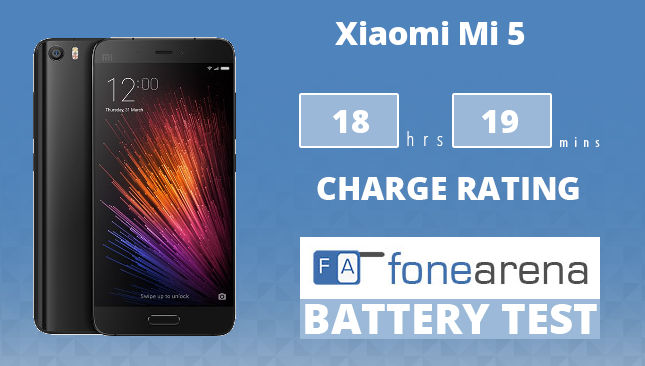
Our testing revealed that the 3000 mAh battery on the Xiaomi Mi 5 results in some of the best results we’ve experienced in the category. The phone gets a charge rating of 18 hrs 19 minutes in a mixed use scenario. Screen on time was usually above 4 hours and all said and done, battery life was absolutely fantastic. We got a full day of usage with a battery drain of just over 50%. With careful usage, you should be able to get two days of use out of the phone. Aside, the phone supports the Qualcomm Quick Charge 3.0 standard which can be used to top off the charge within minutes.
Conclusion
The Xiaomi Mi 5 without a doubt pushes the boundaries of what has been achievable in an affordably priced handset. The phone brings top of the line performance, amazing battery life and stunning design for a price point of Rs. 24,999 which is unprecedented. Sure, the camera could be a bit better and we do lament the absence of a higher capacity variant in India but we can’t help but recommend the Xiaomi Mi 5 as a device that lines up right alongside the current generation flagships and handily wins from a price to performance ratio.
Pros
- Price to Performance Ratio
- Design
- Battery Life
Cons
- Intermittent Heating Issues
- Video Quality
- Speaker

